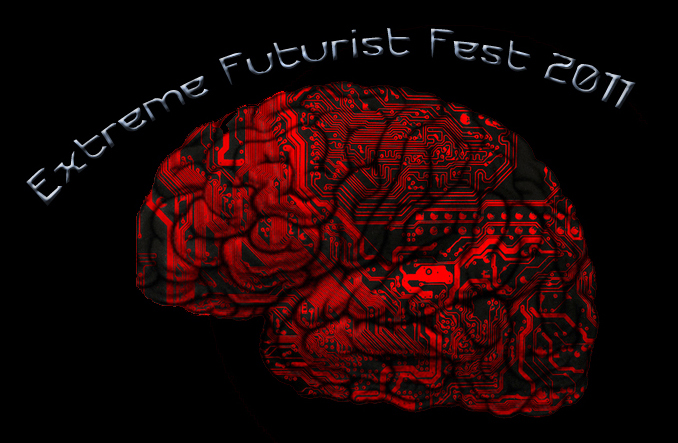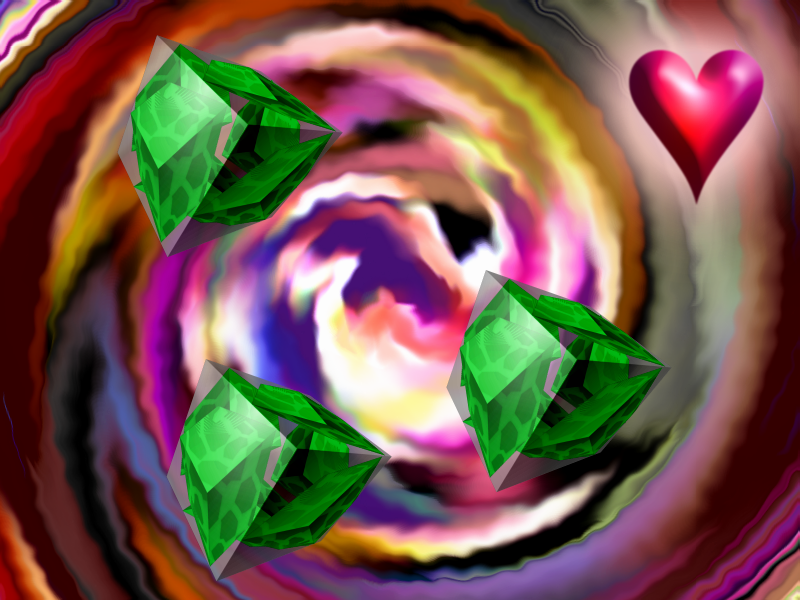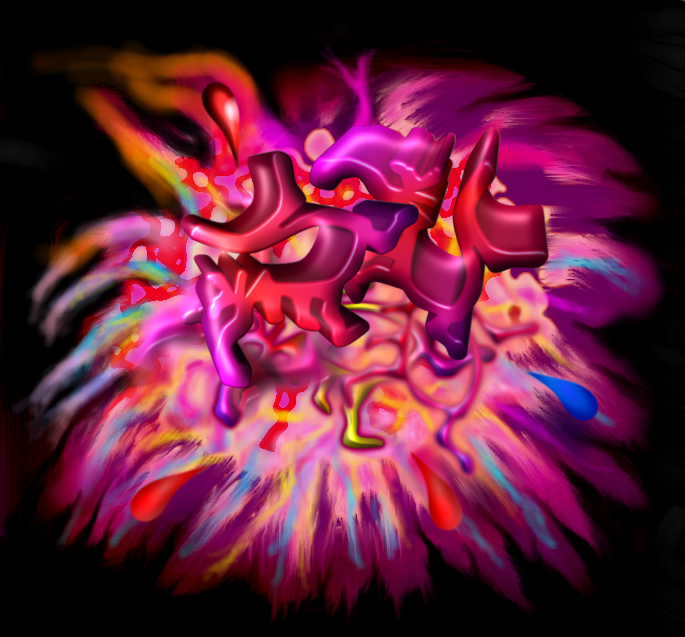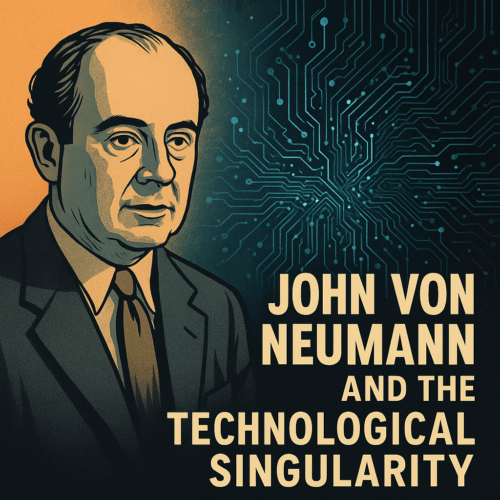Visual Culture and Transhumanism
wpengine / Op Ed
Posted on: September 2, 2011 / Last Modified: September 2, 2011
‘Visual Culture’ has to do with the creation, transmission and perpetuation of ideas in culture by visual means. Imagery, including shapes, colors, logos, fonts, apparel, and more broadly, ‘styles’, become symbols acting to carry and transmit meaning in a particular culture, and communicate ideology. A culture’s symbols can originate in that culture, or be a combination of new and borrowed ideas and meaning from others. For instance ‘tie-dye’, although dating back to ~500 AD, in the West is seen primarily as a symbol of hippie culture, communicating a particular set of social, political, and lifestyle beliefs.
What can we identify in the Singularity and Transhumanist community as playing this particular role, and what ideology does some of the present visual culture communicate?
Transhumanist visual culture can be characterized broadly as forward looking imagery that captures Transhumanist concepts, such as augmented sensory experiences, redesigned bodies, indefinite lifespans, and so on. There is a long history of art in the Transhumanist movement, dating back to the late 1970s/early 1980s with the work of Natasha Vita-More, who named the Transhumanist art movement and wrote the Transhumanist Art Statement and Extropic Art Manifesto, as well as many other papers and presentations promoting and addressing this topic. Transhumanism, however, is now more an intellectual movement than anything else, being markedly less aesthetic than related movements such as the cyberpunk, psychedelic and industrial movements. And so unfortunately, the visual aspect of Transhumanist culture is not well known by many Transhumanists today, and at present does not hold a lot of significance for them. However, there are some rich visual elements abound, and from all corners of Transhumanist thought.
One prominent visual element of Transhumanist culture right now comes out of the work of Rachel Haywire, lead of Experiment Haywire, pioneer of machineKUNT records, founder of the multi-media arts and science festival Extreme Futurist Fest (EFF), and most recently, the Human 2.0 Council. Haywire is thought to be a major force contributing to cross pollination of Transhumanist and Industrial visual culture.
Haywire’s most explicitly Transhumanist projects, for instance, EFF and Human 2.0, deliberately incorporate industrial imagery. Why the crossover? Well for one, the ideology of the two movements in many ways coincides. For instance, Transhumanist’s share with industrial culture a belief in DIY biology/biohacking, which goes alongside tattoos and piercings for Industrialists. Pioneers in mixing Transhumanist and Industrial media are bands Front 242 and Front Line Assembly. Newer enthusiasts in this vein include Trimetrick, UCNX, Chris Coreline and Johan Ess. And industrial artists like Aunia Kahn readily incorporate Transhumanism into their art.

In discussing the motivations of the groups she leads and identifies with, Haywire writes “Transhumanism is not just a field of science for us. It is a lifestyle and an aesthetic. We are real life mutants and the soundtrack to our generation.” And the imagery for her projects is meant to express that. I would add that industrial imagery offers a different dimension from which to view Transhumanist concepts, often in a darker, more aggressive, more urgent, and in some ways more radical light – evoking a strong aesthetic response to the future.

Another source of visual culture in the Transhumanist movement comes from the logos of its institutions. One notable, although perhaps often over-looked logo, is that of the ‘Future of Humanity Institute’, which features the image of a black diamond.
The logo’s symbolism evokes thought on the existential risks faced by humanity via technology, in particular the possibility of a near future Great Filter. It is thought by some futurists that the greatest threats to human survival lay immediately ahead, as we approach the invention of technologies with the power to wipe out all of mankind.
The black diamond symbol is more widely associated with the ski and snowboard industry to mean ‘most difficult’, connoting ‘danger’. In search of a logo, Anders Sandberg explains how Nick Bostrom “saw the ski logo during a holiday and it clicked”. It’s not all doom and gloom, however, the Future of Humanity Institute also identifies with a lesser-known meaning behind the black diamond symbol related to logic. Sandberg writes: “The symbol also has a meaning in some branches of logic, representing “possibility”. Sandberg goes on to recount “I also liked it because it is a dynamic square: something solid, but potentially tipping over in one direction or another.”
The most original and arguably most optimistic visual culture elements associated with Transhumanism today are the work of Singularity Utopia. Her art is meant to affect, at times subconsciously, our views and behavior towards the future, as well as broaden the conceptual reach of Transhumanist ideas. She writes:
“My ‘Singularity ART’ is designed to open minds. Art is often recondite (esoteric) but hopefully the obscurity in my art is not excessive. Via my images I allude to intelligence exploding, thus upon this theme of explosiveness my images typically exhibit an overloaded celebratory aspect. My images represent a very exciting event. I want to capture the excessive abundance of supreme intelligence thus ‘excess’ is a feature of my images.
I want the explosiveness to be accessible to everyone, but for the vast majority of humans I realize extreme intelligence is currently inaccessible. Complexity and simplicity are the two balancing poles in my art. There is dichotomy between excess and minimalism. The concept of intelligence is simple but manifestations of intelligence appear complex for stupid people. Intelligence exploding is a simple concept, which people can theoretically imagine, but in practice many people simply do not have substantial imaginations thus they cannot visualize revolutionary new concepts.
I am influenced by Minimalism, Conceptual Art, and Dada. My Singularity ART is an explanation of massive intelligence for stupid people, therefore due to the mainstream stupidity of humans I hint at Dadaism. Intelligence is conceptually very Anti-Establishment, thus you see the rationale for my Dadaistic hints. Principally I focus on the ‘concept’ in my images because I don’t want people to become sidetracked by surface details, thus via minimal rendering I artistically present my ideas. The Singularity is very strange and powerful but it’s also very simple. I simply want people to comprehend the awesome utopian power of the Singularity, thus via a jolt from my art I try to open human minds. The Singularity is bursting-out, breaking free. Dependent upon the level of intelligence in the viewer, my art will operate on subconscious or conscious levels.”
Just breaking onto the scene of mainstream Transhumanist consciousness has been the art work of Sniff Code, author of the science fiction book Clone. The work is highly provocative and imaginative, coupling imagery with short essays, creative works, and transhumanist poetry. And just announced, Sniff Code will be teaming up with Haywire in designing the website imagery for Extreme Futurist Fest.
So what’s next in this domain? As the popularity of Transhumanism increases we are sure to see it grow and fill out aesthetically—coming to have more of its own identifiable style perhaps, as well as more symbols in which memes can be communicated. Such an evolution is integral to the evolution of Transhumanists more generally, as Vita-More explains in the Transhumanism Art Statement:
As Transhumanist Arts come into focus
As more artists join our efforts
As more designs are produced
As more music is composed
As more stories are written
As the tools and ideas of our art continue to evolve,
So too shall we.
About the Author:
 Nikki Olson is a writer/researcher working on an upcoming book about the Singularity with Dr. Kim Solez, as well as relevant educational material for the Lifeboat Foundation. She has a background in philosophy and sociology, and has been involved extensively in Singularity research for 3 years. You can reach Nikki via email at [email protected].
Nikki Olson is a writer/researcher working on an upcoming book about the Singularity with Dr. Kim Solez, as well as relevant educational material for the Lifeboat Foundation. She has a background in philosophy and sociology, and has been involved extensively in Singularity research for 3 years. You can reach Nikki via email at [email protected].














